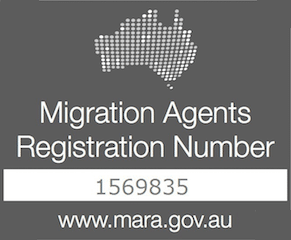A partner visa is a family-based permanent residency pathway. If your partner is an Australian citizen or permanent resident, they can sponsor you to become a permanent resident. However, many readers have some confusion about the partner visa application process. Today, we will outline some important considerations to help those who are considering or about to apply for a partner visa.
If you need assistance with a partner visa application or have any questions regarding the partner visa, feel free to contact us at any time.
Applying for a partner visa before marriage
To apply for a partner visa, the applicant needs to prove the existence of a genuine relationship between the applicant and the sponsor, which typically means being married. However, marriage is not a strict requirement. The most common exception is being in a de facto relationship, which entails cohabitation.
The Prospective Marriage subclass 300 visa is designed for overseas partner applicants who are planning to get married in Australia. Once the visa is granted, the applicant will receive a temporary residency visa for nine months. However, the applicant must register their marriage with their sponsor in Australia within those nine months, after which they can apply for a partner visa.
For offshore partner visa applications, there is no strict requirement to be married before the application date. As long as the marriage is completed during the visa processing period, the conditions will be met. If a subclass 300 visa application has been submitted and the marriage is completed during the visa processing period, a request can be made to the immigration department to change it to a partner visa.
For onshore partner visa applications, the above exception does not apply. If the applicant cannot prove that they were married before the application date, the application will be refused.
De facto relationship
A de facto relationship is when the applicant and sponsor have been cohabiting for at least 12 months. Evidence that needs to be provided includes:
- Cohabitation: Records of communication at the same address, joint rental agreements, or joint property purchase contracts.
- Financial relationship: Joint bank accounts, shared ownership of assets, and pension beneficiaries.
- Social relationship: Recognition of the relationship in society, such as photos with friends or relatives.
Please note: If you are already married, the above information still needs to be provided, but you do not need to meet the “cohabiting for at least 12 months” requirement.
How to waive the two-year waiting period in Australia
Typically, applicants can only first obtain a two-year temporary partner visa, during which they can work full-time or travel. After receiving the temporary visa for two years, evidence must be provided to prove that the relationship is still ongoing and up-to-date police clearance is needed to obtain a permanent visa; this is the so-called waiting period. In special cases, applicants can directly obtain a permanent visa without the two-year waiting period. Prerequisites are:
- At the time of visa application, the applicant and sponsor have been married or in a de facto relationship for more than 3 years.
- At the time of visa application, the applicant and sponsor have been married or in a de facto relationship for more than 2 years and have a child.
However, the immigration department will only grant a temporary visa unless the applicant applies for a direct permanent visa.
Including non-biological children of the sponsor
If the applicant has children from a previous relationship and the child is not the sponsor’s biological child, the review process becomes more complex. If the child is under 18 years old, they are usually considered dependent on their parents. They can be included in the partner visa application but need consent from the other biological parent.
If the applicant does not intend to include their under-18 child in the partner visa application, the child still needs to pass a medical examination and provide a police clearance. However, if the applicant does not have custody, the situation becomes more difficult.
Applying onshore
Partner visas can be applied for both onshore and offshore. For onshore applications, a substantive visa is required, not a bridging visa, and the visa held must not have a “no further stay” clause. The pros and cons of onshore applications are as follows:
Pros:
- Bridging visa: Applicants can obtain a bridging visa, allowing them to stay in Australia while their application is being processed (which can take 12-15 months).
- Work rights: The bridging visa allows the applicant to work in Australia.
- Australian Medicare: Basic free Australian health insurance can be enjoyed while waiting for the partner visa outcome.
Cons:
- Processing time: Onshore applications can take 12-15 months to process, while offshore applications are much faster.
- Travel restrictions: If applying onshore, the bridging visa does not allow leaving Australia. However, if there is a reasonable reason for leaving, a bridging visa B must be applied for first, and only after obtaining it can the applicant leave the country.
Exceptions to the 12-month rule for de facto relationships
Generally, when applying for a partner visa, evidence of cohabiting for at least 12 months is required. However, there are three exceptions:
- The de facto relationship has been registered with the state government.
- The applicant and sponsor have a child together.
- The de facto relationship between the applicant and sponsor is not allowed in the applicant’s country.
Sponsored someone else in the past
If you have previously sponsored someone else or have been sponsored, the following sponsorship restrictions apply:
- If you have sponsored someone else before, you need to wait 5 years before sponsoring again, and each person can only sponsor twice in their lifetime.
- If you have been sponsored before, you need to wait 5 years before sponsoring someone else.
- If you previously obtained PR through the Contributory Parent migration pathway, you need to wait 5 years before sponsoring someone else.
- If you can provide a strong and compelling reason, the waiting period mentioned above can be waived.
Health exemptions
When applying for a partner visa, all family members included in the application must undergo a medical examination. Usually, when applying for a permanent or temporary visa, there is a “one person fails, the whole family is rejected” rule, meaning if one person fails the medical examination, the entire application will be rejected.
However, this rule does not apply to partner visa applications. This means that even if one person does not pass, the application can still be approved, provided that the cost of treating the disease is not excessive. Financial circumstances, health insurance policies, and family payment capabilities can be provided as evidence in the visa application.




